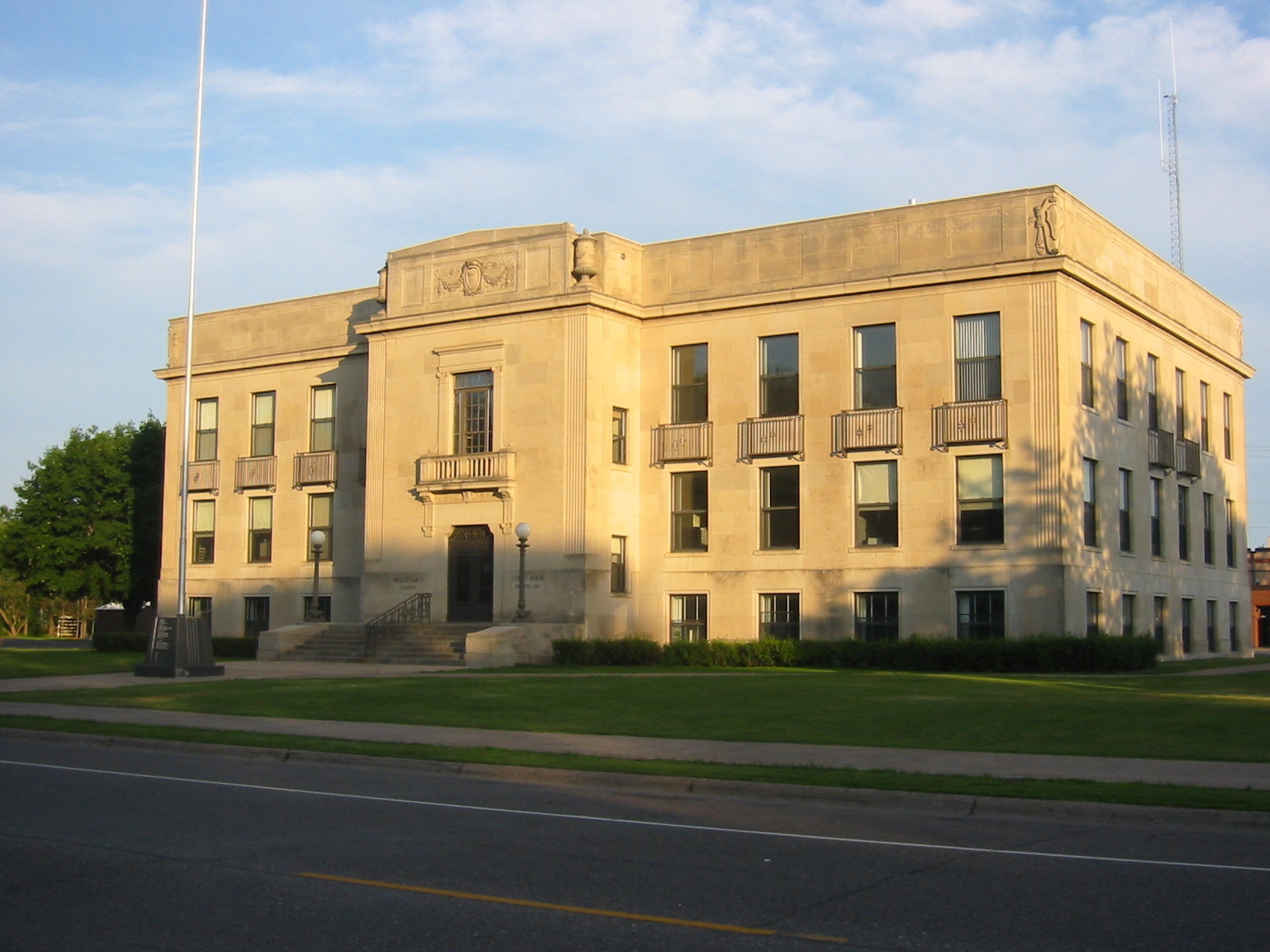Since the founding of our communities, organizations, businesses and citizens have stepped forward to build and serve their community. Click on any of the logos below to learn about those who made this website possible! If you would like to learn about becoming a sponsor CLICK HERE!
Mille Lacs County, MN
County in Northeast MNMille Lacs County is in the east central part of Minnesota. Mille Lacs Lake comprises two-thirds of the northern boundary of the county. The county consists of 685 square miles (354,472.95 acres), of which 102 square miles is water and 583 square miles is land.
The northern quarter of the county is hilly and rough. The central part of the county consists of gently rolling hills. It is crossed intermittently by broken chains of sand and gravel ridges which rise from 5-25 feet above the plain. The southern area of the county is slightly rolling sand hills and sandy outwash plains. One-eighth of the county is swamp land.
The Rum River is head-watered in Mille Lacs Lake in the northern end of the county and runs the full length of the county from north to south. Nearly all the superfluous wastewater runoff from the entire county is drained by the Rum River. Drainage is best in areas closest to the river; however, the various tributaries are sluggish and ill-defined, making the balance of the county drainage less than adequate.
Other lakes in the County include: Ogechie, Shakopee, and Onamia (Rum River flows through them), Clear Lake, portion of Whitefish Lake, Cranberry Lake, Rice Lake, Silver Lake and Mud Lake.
The average elevation of the county varies between 1000 and 1200 feet above sea level. Mille Lacs Lake is about 1250 feet above sea level.
The county is divided into 17 townships. There are eight towns within the county: Bock, Foreston, Isle, Milaca, Onamia, Pease, Princeton, and Wahkon.
The first school was built near Princeton in 1856. By 1938 there were 67 school houses in 58 districts. Schools and districts have been consolidated over time into the four school districts that now serve the area: Princeton, Milaca, Isle, and Onamia.
In 1855-56 a government road was built from the mouth of the Rum River to the Indian Villages at Mille Lacs Lake passing through Princeton. Sherburne County built a road from Princeton to Elk River in the following year. A road also connected Princeton with St. Cloud to the west and the St. Croix River on the east. These projects became the nucleus of the Mille Lacs County Highway system.
The first railroad through the county was built in 1882 from St. Cloud to Hinckley. Soon after construction was completed, in 1886, Milaca was further connected to the town of Elk River by railroad. Many of the county's towns began as sawmills or logging towns on the Rum River or along these railroad lines created as a result of the forest harvesting trade.
When Mille Lacs County was originally created in 1857 a portion of what is now the southern end of the county was in what was then called Monroe County. The County lines were re-drawn in 1860 to the present day boundaries and a full set of county officials were elected. The County seat was located in Princeton until 1920, when it was officially moved to Milaca.
In 1923 a new Courthouse was built in Milaca. It was constructed of concrete, tile and stone. The floors, walls and ceilings are cement. The offices are located around the Rotunda area. The second floor also has one full sized Court room intended for felony jury trials and two smaller court rooms in which various hearings and meetings may be held around the rotunda with openings that overlook the rotunda. With ever growing office needs to meet services required by the growing County, offices are now located in this building, a second single story office building located across the street from the Courthouse, a jail built behind the main building, and several offices located throughout Milaca. The original courthouse building is on the National Register of Historic Places.

- County: Mille Lacs County, MN
- Region: Northeast MN
Destination Mille Lacs County, MN
- Sponsors
- Towns
- Businesses
- Community Organizations
- Faith Organizations
- Festivals and Events
- Points of Interest
- Veterans
Learn how to contribute to any of the above categories.
Towns of Mille Lacs County, MN
The small towns of the Midwest are rich in history and a great way of life! Below you can visit and learn about the small towns we call home! Towns that have their name highlighted have become FEATURED TOWNS. Businesses/organizations from these towns have stepped forward as SPONSORS enabling us to include (or will include as acquired) stories and website links to ALL their community organizations (chambers, groups and departments, etc.), stories and website links to ALL their points of interest, annual festivals/events and stories done about their citizens, veterans and faith community. To learn how to become a featured town CLICK HERE!
Businesses of Mille Lacs County, MN
The businesses of our towns are truly the lifeblood of each community, click on any businesses below to learn about them, to learn how to add your business to your town and county page CLICK HERE!













